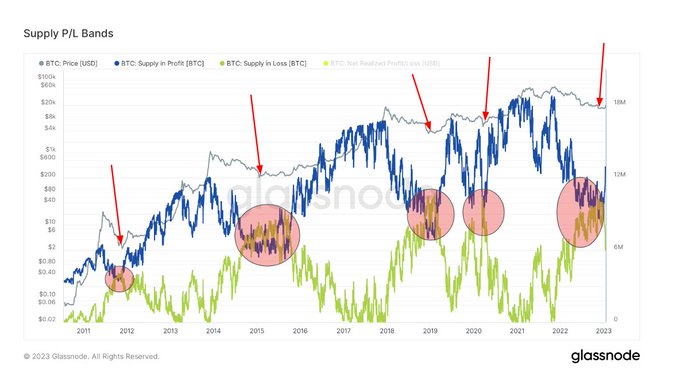2019-4-29 12:53 |
Coinspeaker
Binance Research: XRP Best Diversifier, Bitcoin and Ethereum Most Correlated
So-called cluster analysis, is a well-known statistics technique that helps to group/ classify objects under one roof and Binance now used it in order to explore the top 30 cryptoassets retrieved from CoinMarketCap.
The report, which is titled, “Categorizing Cryptoassets: A Return-Driven cluster Analysis,” focuses on the correlation between cryptocurrencies in terms of price.
The research showed that based on weekly returns, large cryptoassets such as Bitcoin and Ethereum exhibit the highest correlations, but XRP displays a lower correlation and is an exception as the best diversifier amongst digital assets with a market cap above $3 billion.
Bitcoin forks (Gold and Cash), Ethereum Classic and Litecoin form a single cluster whereas other potential groups around the different effects. One of those is what they call “Binance effect” that includes cryptos as Tezos and Dogecoin, two assets not listed on Binance and each form a single child cluster.
What does cluster analysis reveal about Bitcoin ($BTC), Ripple ($XRP) and other large digital assets?@Binance Research takes a closer look in a new, in-depth report – “Categorising Cryptoassets: A Return-Driven Cluster Analysis”https://t.co/pkfjC3BN0t
— Binance Research (@BinanceResearch) April 26, 2019
Also, there are potential geographical effects such as a dichotomy between American and Asian cryptoassets. For example, it is noted in the research that Qtum (QTUM), Cardano (ADA), NEO and OmiseGo (OMG) are all based in Asia “and most of their coin-holders are located in this region”.
By way of contrast – and the basis of the dichotomy – XRP, BAT and Dogecoin (DOGE) teams and investors “are located in America”.
There is also a so-called “Coinbase listing effect” where some assets that were reported to be listed or investigated by Coinbase seemed to belong to similar clusters. For example, during the course of the study, Coinbase listed XRP, Basic attention token (BAT) and Zcoin (ZEC), of which ended up residing in a common subgroup, providing the notion that coins may exhibit similar trends in the same market conditions.
Also, Binance notes that some privacy coins as Dash and Monero are forming a single cluster as well.
They are highlighting however that the correlations are extremely high among large-cap digital assets.
Ether and Bitcoin also exhibited an extremely high correlation (0.872) between each other and POW assets exhibited higher correlations with each other than with non-POW assets.
Dogecoin (DOGE), Tezos (XTZ), XRP exhibited the lowest correlations with other digital assets across this one-year period. Notably, XRP is less correlated in the long-term than what our previous analysis suggested across several 3-month time-periods, using daily returns.
XRP is, according to research, highly correlated with Stellar (0.73). While Stellar was initially built on the Ripple protocol, its code was forked quickly forked and revamped. As of today, Stellar and XRP code does not rely on the same common core. Yet these two digital assets still share several similarities as they both aim to “reshape the global remittance industry.”
Will This Research Help XRP?Famous trader Peter Brandt told his 269,000 Twitter followers this week that it’s “do or die time for the XRP bag holders” as the token clings to support at $0.29.
Do or die time for the $XRP bag holders pic.twitter.com/ZrRtHtBDCY
— Peter Brandt (@PeterLBrandt) April 27, 2019
For now, XRP is still hanging pretty low, even after the endorsement from the World Bank that described Ripple’s xRapid as a “real-world solution” that was being “actively tested”. The obvious problem is regulatory cloud that still hangs over the asset regarding whether the US SEC rules it to be a utility token or a security, with Ripple’s claim that it is not the creator of XRP perhaps hard to sustain.
By Binance’s own admission, although there is some striking clustering that may point to deeper relationships beyond the weekly return correlation, that will require data inputs from other asset characteristics.
The researchers say that their approach must be extended to include market capitalization, volume and turnover ratio. Other inputs for the cluster analysis could include hashrate, active addresses, transaction throughput and active nodes as well.
The lack of the fundamental data of that sort that’s readily available for stocks, such as earnings and profits, means network metrics will be the chief way in which the cluster analysis can be improved.
“Whereas some of the results appear to be consistent with industry-defined fundamental approaches, the difficulty of finding trustworthy data may hold investors back from completing a thorough analysis on this topic. In comparison, traditional equity markets offer plenty of metrics (e.g P/E ratio, turnover, ROE) that are routinely used in research reports,” as the authors make clear.
Binance Research: XRP Best Diversifier, Bitcoin and Ethereum Most Correlated
origin »Binance Coin (BNB) íà Currencies.ru
|
|













